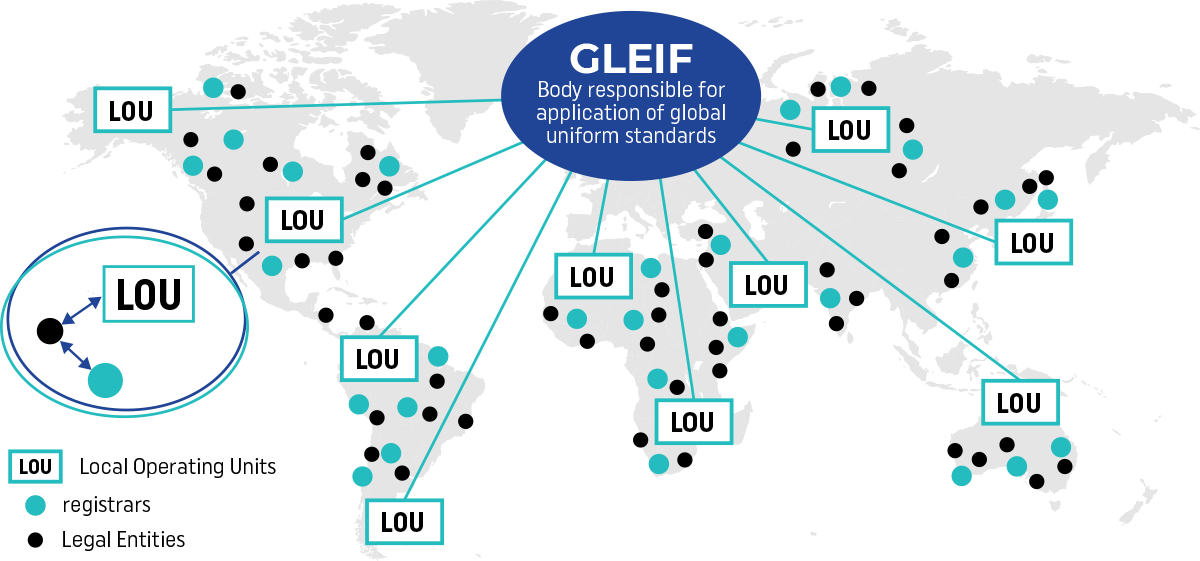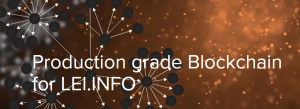From the very beginning of LEI.INFO project, when it was only an R&D project run at MakoLab, the great opportunity of the creation of radically new LEI system based on Blockchain has been deeply investigated.
We have realized two Proof-of-Concept projects based on private Ethereum Blockchains. These POCs allowed us to investigate deeply the possibility to construct a system which represents the highest level of both technical and organizational security and is completely decentralized.
The ideas behind the POCs and the conceptual framework for the use of Blockchain for the LEI system has been presented in multiple conferences and presentations.
The E-Finance Lab and DZ BANK 2016 Fall Conference
“Using Blockchain for Digital Identifiers: Improving Data Security and Persistence for Digital Object Identifier (DOI) and Legal Entity Identifier (LEI)”.
Goethe University Frankfurt. September 1st, 2016.
The lecture video:
The lecture slides:
DataAmplified 2016
“How Can Blockchain amplify Digital Identifiers? Improving Data Persistence, Openness, and Trust in the modern world.”
DataAmplified 2016 – XBRL and the future of Business Reporting, Singapore, Nov. 8-10, 2016.
The concept of radically new LEI system
From the high level view the proposed new LEI system assumes the use of ‘consortium’ type of Blockchain with three types of nodes:
- User nodes – the nodes participate in the global Blockchain as passive users – they can see all the data stored in it, but can’t create nor edit anything.
- Registration nodes – the node having all the properties of the User nodes plus the ability to provisionally add new LEIs to the system. However, such newly added LEIs are not visible on the system until the LOU nodes confirm them through the “Proof of Authority” mechanism.
- LOU nodes – the nodes having all the properties of the Registration nodes plus the capacity to confirm the new or modified LEIs as valid.
Such an architecture of the new LEI system enables thousands of registration authorities from multiple countries to participate in the new LEI creation, opening path for the true global adoption of the system. It has been already proposed by MakoLab to GLEIF.
GraphChain
Makolab has just proposed a new idea of creating a Blockchain compliant distributed database which exposes its data with explicit semantics present, is easily accessible and which applies Blockchain securitization mechanisms to the RDF graph data model explicitly, without additional packaging or specific serialization. Essentially, the resulting database forms the linked chain of named RDF graphs and is given a name: GraphChain. Such graphs can then be published using any standard mechanisms using triplestores or as linked data objects accessible via standard web mechanisms using the HTTP protocol to make them available. GraphChain invention was motivated by the needs of the radically new LEI system presented above. The initial Proof-of-Concept projects presented in the top of this page exposed the need for the Blockchain based system that is much more flexible than any standard existing system available today.
Production version of GraphChain for LEI.INFO
In the beginning of 2019, MakoLab has implemented the first production version of GraphChain for LEI.INFO (still as a trial, though).
For details, go here:
In the end of June 2019, the full production version of GraphChain for LEI.INFO has been delivered.
For the first time, LEI data stored in the semantic format on LEI.INFO can be verified against the network of Hyperledger Indy Blockchain.
For details, go here:


